MARKET OVERVIEW
The Global Tunneling Machinery Market and its industry is a part and parcel of the construction and engineering with a focus on machinery designed to tunnel through geological formations. This market embodies the design, innovation, and use of state-of-the-art equipment, such as tunnel boring machines, micro-tunneling machinery, and auxiliary systems that are designed to operate under varying conditions. It serves various sectors such as transportation infrastructure, water management, and energy projects that contribute to creating underground spaces necessary for modern urbanization and connectivity. At the core of the Global Tunneling Machinery Market lies a robust ecosystem of manufacturers, engineers, and project managers dedicated to designing and deploying machinery tailored to meet the technical demands of tunneling projects.
The machines must overcome the challenges posed by geological variations from hard rock formations to soft soil environments. As the complexity of projects is most often associated with critical elements, such as underground metro systems or hydropower facilities, tunneling machinery needs to be provided with precision, durability, and efficiency. This calls for constant innovation in the industry to be on top of technological development and project requirements. The scope of the market extends beyond machinery alone, and into cutting-edge technologies such as automated guidance systems, advanced cutters, and real-time monitoring tools that enhance safety and efficiency during tunneling operations. Specialized materials and techniques, like ground freezing and slurry shields, are also integrated with tunneling machinery to address complex environments and reduce project timelines.
Such innovations continue in relevant demand led by the global imperative for resilient infrastructure, immune to ravishing effects of urban expansion and climatic challenges. With growing scale and complexity of tunneling projects, the global tunneling machinery market will be marked by closer collaborations among manufacturers and technology providers. Digitization is going to come with trends in the future, when data analytics and artificial intelligence are integrated into operational precision in machines, further enhancing performance optimization of equipment with remote monitoring and predictive maintenance systems that reduce equipment downtime. The other significant factor in this market is sustainability. Machinery manufacturers are going to look at reducing the environment impacts by using energy-efficient designs and using materials with lower carbon footprints. Electrification and renewable energy integration into tunneling equipment will be the key innovation for the achievement of global sustainability goals. In addition, excavated material reuse in construction processes will be a priority and in line with circular economy principles. The Global Tunneling Machinery Market is also important in solving global urban challenges. As the world's cities grow in population, the need for underground infrastructure such as subways, water pipelines, and utility tunnels will remain a keystone of urban planning strategies. The ability to build robust machinery that can handle complex urban environments will define the future direction of this market.
The Global Tunneling Machinery Market is a dynamic and niche area of the engineering world and a cornerstone for the development of vital underground infrastructure. Given the continuous evolution of technology, focus on sustainability, and the continuously expanding array of applications, the market will remain indispensable for facilitating modern infrastructure solutions at a global level.
Global Tunneling Machinery market is estimated to reach $10,059.3 Million by 2031; growing at a CAGR of 6.3% from 2024 to 2031.
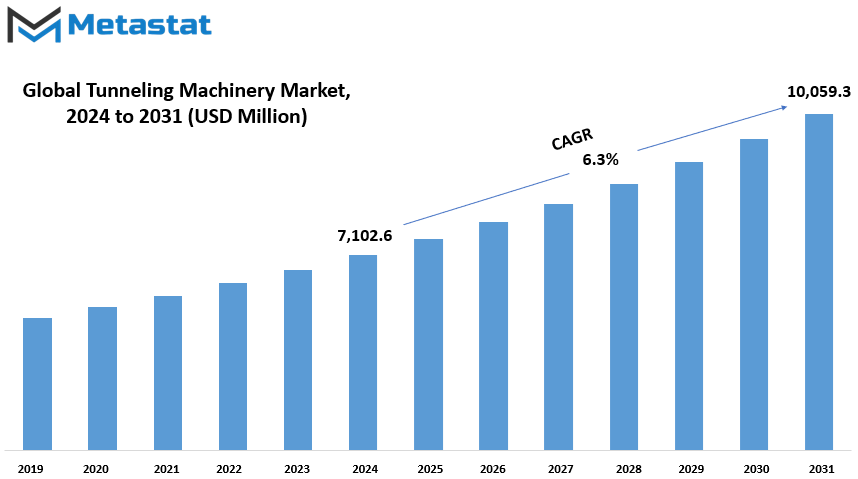
MARKET DETERMINANTS
Great investments in infrastructure development projects across the world have become one of the major drivers for the market. Increasing interest in the improvement of infrastructure has further enhanced the demand for efficient and advanced tunneling solutions. Another key driver is the growing demand for underground transportation networks, particularly in urban areas. This becomes necessary, and also crucial, as cities keep expanding and populations grow. They then need underground systems like subway or underground tunnel, which can reduce congestion, improve mobility, and many more.
However, there is a challenge that could slowdown market growth. High costs of initial investment and operation costs of tunneling machines are a significant barrier. All of these costs are quite burdensome for the smaller and developing economies wishing to invest in tunneling infrastructure. Environmental issues and regulatory matters further complicate the tunneling operation and will create obstacles for progression. A project through tunneling would affect local ecosystems, and harsh environmental regulation would make approval slow down or even create complications with the approval, making this project much more complicated than others.
Despite all of the above-mentioned challenges and obstacles, the opportunities abound, too. Advances in tunneling technology can be expected to play a fundamental role in overcoming these challenges. New innovations are aimed at increasing efficiency and the reduction of costs in the operations of tunneling, likely to bring about improvements to both speed and affordability into the market. These advancements will not only help bring down the costs of such tunneling but also improve the overall safety and environmental impact of these projects. As the technology evolves, this will open up even more lucrative opportunities for the market, allowing a wide range of projects to be undertaken and completed more effectively.
The investment in infrastructure increasing, a growth in the demand for underground transportation and advanced tunneling technology shall make this dynamic and the market is expected to grow in the future. High costs and regulatory issues shall always prove to be hurdles for the growth and innovation would provide appropriate opportunities for the market to boom in coming years.
REPORT SCOPE
Machine Type
Tunneling machine types include a variety of tunnelers designed for different specific tasks associated with project nature. Among those, probably the most famous are Tunnel Boring Machines, often described as large, complex cutting machines capable of cutting various soil and rock formations while simultaneously creating a tunnel. Their ability to handle different ground conditions makes them an essential part of modern tunneling projects, particularly in urban settings where precision and speed are crucial.
Alongside TBMs, there exist the Microtunneling Machines, and these are small tunneling constructions. These are usually adopted in scenarios whereby the standard construction is oversized and quite impractical. They would be more suitable when piping beneath the roads or under any building structures. The smaller equipment also tends to make them environmentally friendly because they don't cause so much surface damage in comparison with the bigger construction machines.
There is the roadheader that is made specifically for softer rock. Roadheaders feature a rotating head containing sharp heavy bits, breaking into rock, to facilitate digging tunnels into the underground space. Typically used on roads and railway tunnels when rock is not so hard, and roadheaders have an excellent cutting performance from sandstone through to limestone rock, this product can make cut through diverse types of tunnel shapes and dimensions.
Drilling Jumbos are specialized machines for drilling blast holes in rock to be used in tunneling. These machines usually have more than one boom with a drilling rig, allowing them to operate efficiently in large tunnel projects. Drilling Jumbos are often utilized in scenarios where blasting is necessary to break through harder rock; however, their ability to drill several holes at once accelerates the process significantly.
Another common equipment is Pipe Jacking Machines, where pipelines are pushed through soil that has previously been excavated to install underground pipes. The lack of requirement for open-cut trenching makes this a good candidate for working under infrastructure such as roads and buildings.
There are still other tunneling machines not mentioned in the categories above, yet they are equally important for specific tunneling operations. Some of these machines include special constructions depending on the terrain, among other things.
Together, these differing types of tunneling machines will continue on to fulfill an important role within construction endeavors around the globe, thus helping to shape needed underground infrastructures for thriving cities and industries.
By Application
The market can be grouped depending on various applications. Applications are categorized into transportation tunnels, utility tunnels, mining, oil and gas pipelines, and hydropower projects. Each of these applications meets different needs, fulfilling diverse industrial purposes.
Transportation tunnels are mainly built for movement. These tunnels are crucial for cities with limited space as they allow safe and efficient means of crossing through the urban city. They are predominantly used for rail, metro, or road systems, which facilitate reduced traffic congestion and therefore better transportation efficiency. Demand for transportation tunnels will continue growing with the growth of cities because these offer a practical solution to the challenges of urban mobility.
Utility tunnels are yet another important application. These tunnels contain basic infrastructures such as water, electricity, and telecommunication systems. They create a safe space for pipeline and cable installation, along with other utilities, to avoid any external damage due to environmental reasons or accidents. Utility tunnels are most valuable in areas with high population density, where it is not possible to install infrastructure above the ground. The demand for utility tunnels would probably rise as urbanization continues and demands more effective and safe means of dealing with utility networks.
Another industry that depends on the use of tunnels is mining. Tunnels provide access to deep underground mineral deposits. Mining tunnels provide miners with a safe path through which to extract the resources and transport them up to the surface. Advanced tunnel construction techniques are a cornerstone of the mining industry for ensuring the safety and efficiency of its operations. The more the demand for minerals, the more essential mining tunnels will become.
Pipelines for oil and gas have a very important role to play in the transportation of energy resources from extraction sites to refineries and distribution points. Often, pipelines must pass through tunnels to cross rivers, mountains, or urban areas. Tunnels make it safe and efficient to lay pipelines with fewer negative environmental impacts and accidents. Pipeline tunnels will be a critical part of the oil and gas industry as the demand for energy resources continues to increase.
Hydropower projects use tunnels for most of their construction works, which are often in dams and reservoirs. It facilitates the movement of water flows to spin turbines to generate electricity. Hydropower is among the greatest sources of renewable energy. Hydropower tunnel construction will continue increasing as these countries find alternative sustainable means of energy.
By End-User
The market is further broken down by End-User, including different sectors. These comprise Government Infrastructure Projects, Private Infrastructure Developers, Mining Companies, and Utilities & Energy Companies. Each group significantly contributes to driving demand and determining the market dynamics.
Government infrastructure projects constitute a high market share. It generally relates to road, bridge, airports, utilities construction and development. Many large scale infrastructure projects are financed and carried out by government institutions. These large-scale investments often aim at strengthening the national economy, connectivity and other public facilities. Long term planning is also considered and hence this constitutes an essential part of the market.
The second market segment is Private Infrastructure Developers. These are private business organizations that specialize in building commercial infrastructures. Their projects may consist of office buildings, residential complex building, shopping malls, among other commercial developments. Mostly, they collaborate with the public sector but are entirely driven by profit and the dictates of the market. It's in their efforts that urban lands grow, and the need for increased commercial space is met.
Mining Companies also have a significant place in the market. These companies deal with the extraction of natural resources like coal, metals, and minerals. Mining requires a great amount of infrastructure development, which includes roads, processing plants, and storage facilities. The demand from mining companies for infrastructure solutions is considerable because they require reliable and efficient systems to support their operations in remote and challenging environments.
Utilities & Energy Companies is also a significant segment. Among this, there are businesses with critical services, including electricity, water supply, gas supply, and others, in terms of telecommunications, too. As the level of energy and utilities becomes high in demand, a great investment is being developed to develop new infrastructure projects towards meeting both the house and business place supply needs, upgrading the exiting system and new facilities for improving energy supplies.
These diverse End-User groups create a broad and varied market. Each sector brings unique needs and challenges, but together they contribute to the ongoing development and growth of infrastructure across the globe.
|
Report Coverage |
Details |
|
Forecast Period |
2024-2031 |
|
Market Size in 2024 |
$7,102.6 million |
|
Market Size by 2031 |
$10,059.3 Million |
|
Growth Rate from 2024 to 2031 |
6.3% |
|
Base Year |
2022 |
|
Regions Covered |
North America, Europe, Asia-Pacific Green, South America, Middle East & Africa |
REGIONAL SEGEMENTATION
The global Tunneling Machinery market is segmented into regions, namely North America, Europe, Asia-Pacific, South America, and Middle East & Africa. Further, the market in North America is divided into the U.S., Canada, and Mexico. Europe region includes key countries such as the UK, Germany, France, and Italy, while all other regions are grouped as Rest of Europe. In Asia-Pacific, it has further been segmented into India, China, Japan, South Korea, and all the remaining countries under Rest of Asia-Pacific. The South America region comprises Brazil, Argentina, and all the remaining countries under Rest of South America. Lastly, the Middle East & Africa market has been bifurcated into GCC Countries, Egypt, South Africa, and all the remaining countries under Rest of Middle East & Africa.
Each of these regions has a specific function in the global market, considering various factors such as development in local infrastructure, the advent of new technologies, and market demand. For example, North America, with its more advanced construction technologies, takes up a significant role in the growth of tunneling machinery. In Europe, the market is driven by countries that are very engineering and innovation-oriented. Asia-Pacific shows considerable demand due to rapid urbanization and infrastructure development. The South American market is growing steadily, driven by investments in construction and transportation. Meanwhile, the Middle East & Africa is growing due to large-scale infrastructure projects in the region.
Segmentation based on this understanding helps have a clearer view of the performance of the tunneling machinery market across different areas of the world, bringing forward the diversified needs and priorities for each region. Market conditions in each area depend not only on economic factors and progress, but also on the evolution of technology, which reflects how tunneling equipment will be used in various industries - mining, construction, among others.
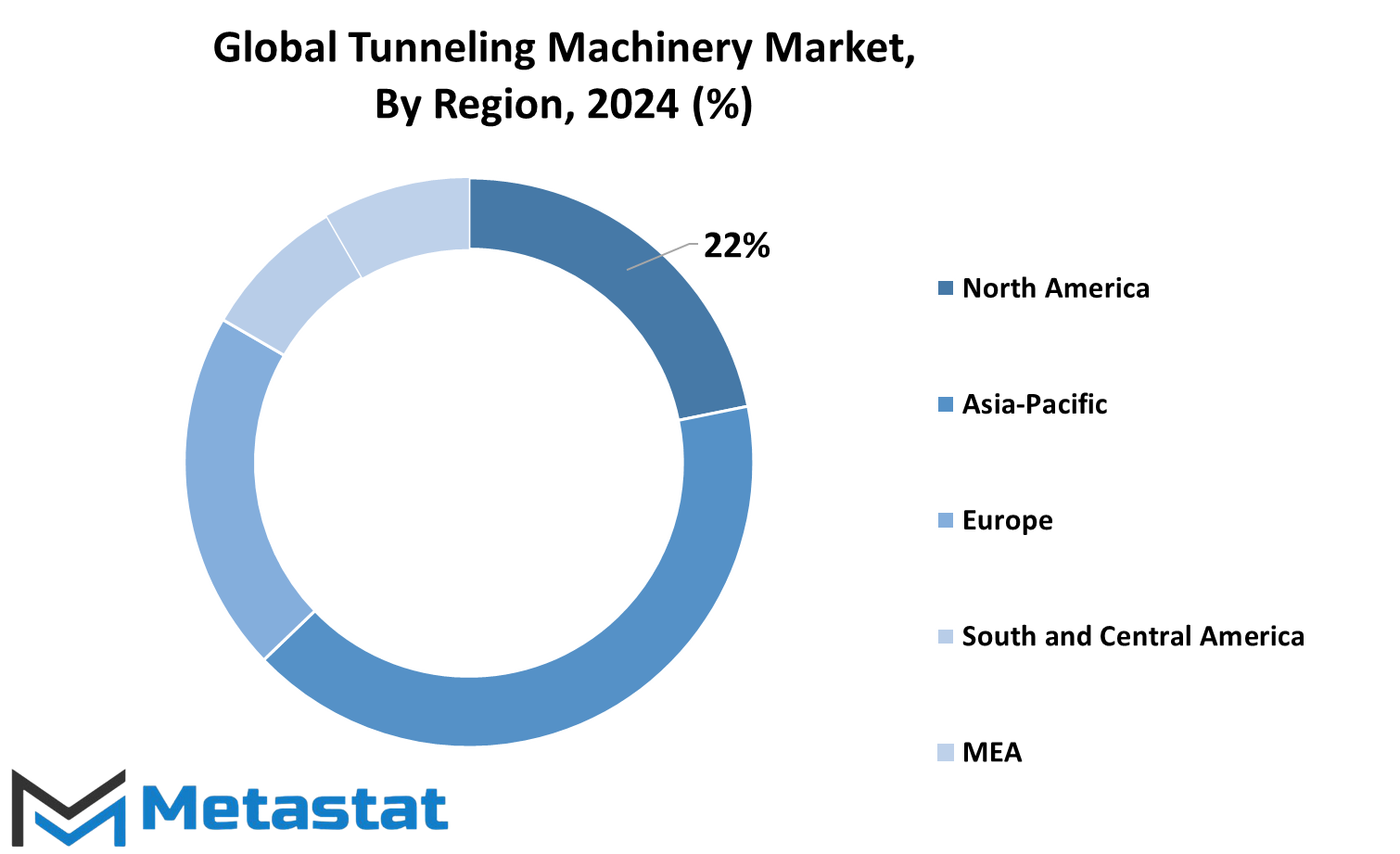
MARKET LEADERS
The Tunneling Machinery industry has some of the most prominent companies, which are essential players in developing and producing machinery for tunnel construction. Of course, Herrenknecht AG is one of the leaders, with its high-tech tunnel boring machines, widely used all over the world. The Robbins Company also gained a strong reputation for its innovative tunneling solutions and offers a wide range of machines designed for various underground projects.
Mitsubishi Heavy Industries, Ltd. and Komatsu Ltd. are also key players in the tunneling machinery industry. The two companies provide cutting-edge technology and reliable equipment to support large-scale construction projects. Another influential name is Sandvik AB, which is known for its leading-edge tools and machinery to help improve the efficiency and safety of tunnel construction.
Caterpillar Inc. is a very well-known brand, producing heavy machinery for construction purposes, such as tunneling equipment. Hitachi Zosen Corporation specializes in producing tunnel boring machines and has a significant presence in international markets, which is helping the industry grow.
Other notable companies such as Terratec Ltd. and China Railway Construction Heavy Industry Co., Ltd. (CRCHI) provide crucial tunneling machinery that ensures the success of infrastructure projects worldwide. JIM Technology Corporation also offers specific equipment for specific needs in tunneling operations.
Kawasaki Heavy Industries, Ltd. provides a wealth of experience in the area of engineering into its operations in tunneling machinery; in particular, it looks toward solutions with high performance. Epiroc AB's range of mining and construction equipment includes tunneling machinery in line with current industrial standards. Liebherr Group is another heavy machinery manufacturing company whose products feature in projects such as tunnel construction.
SELI Group is known for its technology in tunneling machines and services, while Shanghai Tunnel Engineering Co., Ltd. (STEC) has a strong presence in the Chinese market and works on many major tunneling projects. These companies, among many others, will continue to innovate and contribute to the success of tunnel construction worldwide. Together, they are to fill the increasing demand for infrastructure development and will produce safer, more efficient, and environmentally friendly tunnels.
Tunneling Machinery Market Key Segments:
By Machine Type
- Tunnel Boring Machines (TBM)
- Microtunneling Machines
- Roadheaders
- Drilling Jumbos
- Pipe Jacking Machines
- Other Tunneling Equipment
By Application
- Transportation Tunnels
- Utility Tunnels
- Mining
- Oil & Gas Pipelines
- Hydropower Projects
By End-User
- Government Infrastructure Projects
- Private Infrastructure Developers
- Mining Companies
- Utilities & Energy Companies
Key Global Tunneling Machinery Industry Players
- Herrenknecht AG
- The Robbins Company
- Mitsubishi Heavy Industries, Ltd.
- Komatsu Ltd.
- Sandvik AB
- Caterpillar Inc.
- Hitachi Zosen Corporation
- Terratec Ltd.
- China Railway Construction Heavy Industry Co., Ltd. (CRCHI)
- JIM Technology Corporation
- Kawasaki Heavy Industries, Ltd.
- Epiroc AB
- Liebherr Group
- SELI Group
- Shanghai Tunnel Engineering Co., Ltd. (STEC)
WHAT REPORT PROVIDES
- Full in-depth analysis of the parent Industry
- Important changes in market and its dynamics
- Segmentation details of the market
- Former, on-going, and projected market analysis in terms of volume and value
- Assessment of niche industry developments
- Market share analysis
- Key strategies of major players
- Emerging segments and regional growth potential



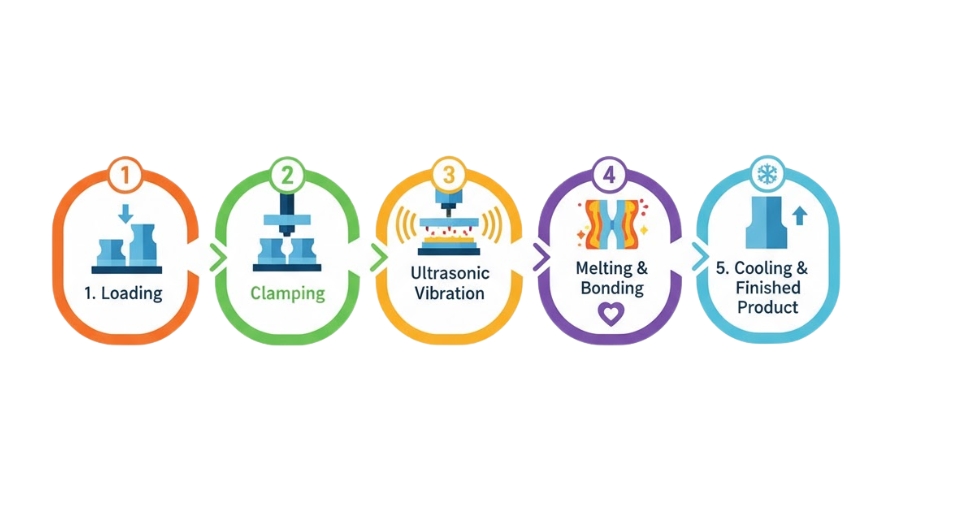
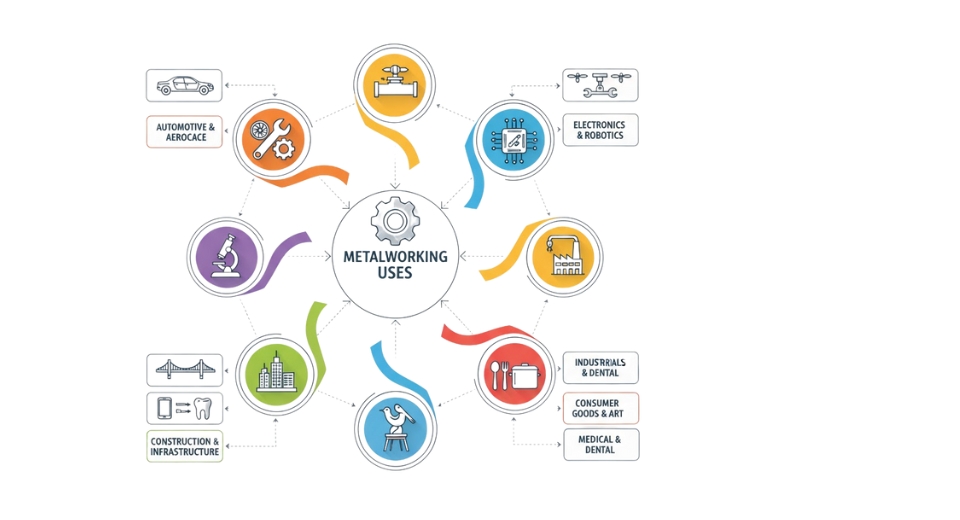
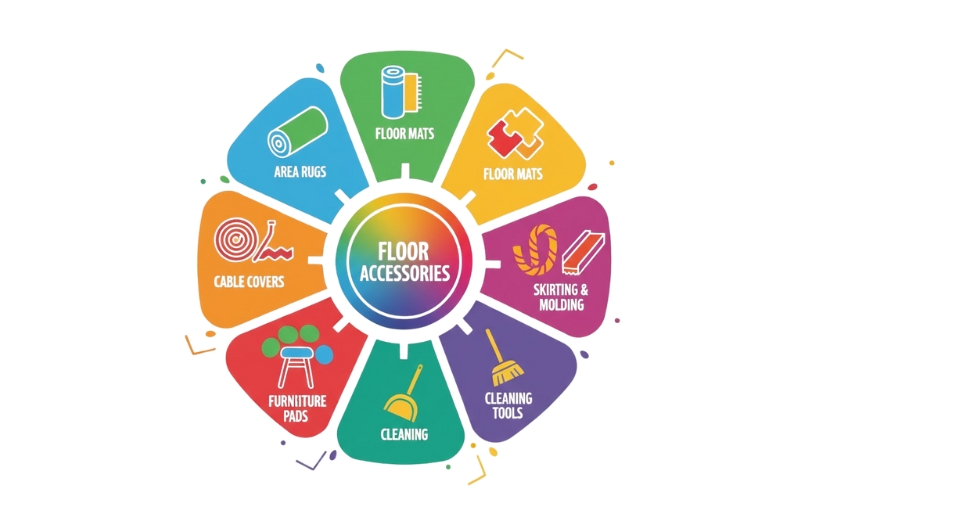
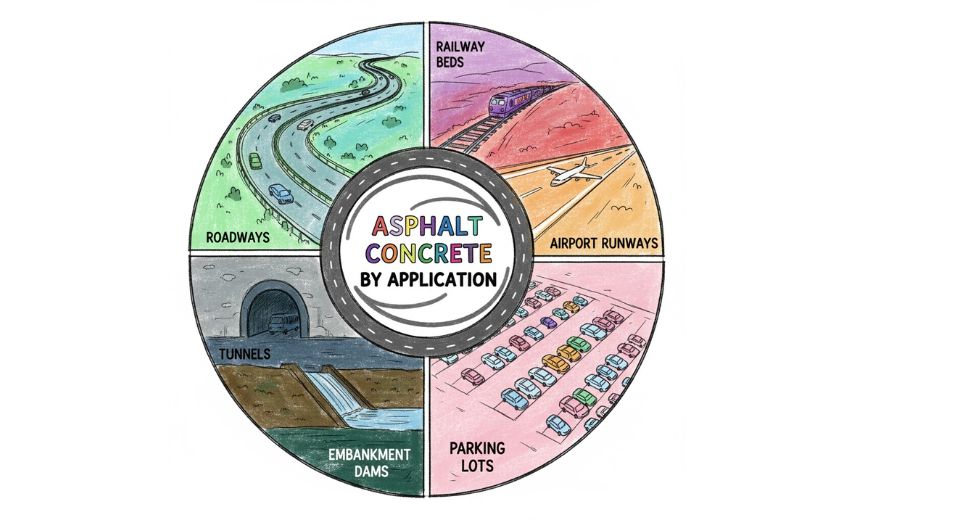

 US: +1 3023308252
US: +1 3023308252






